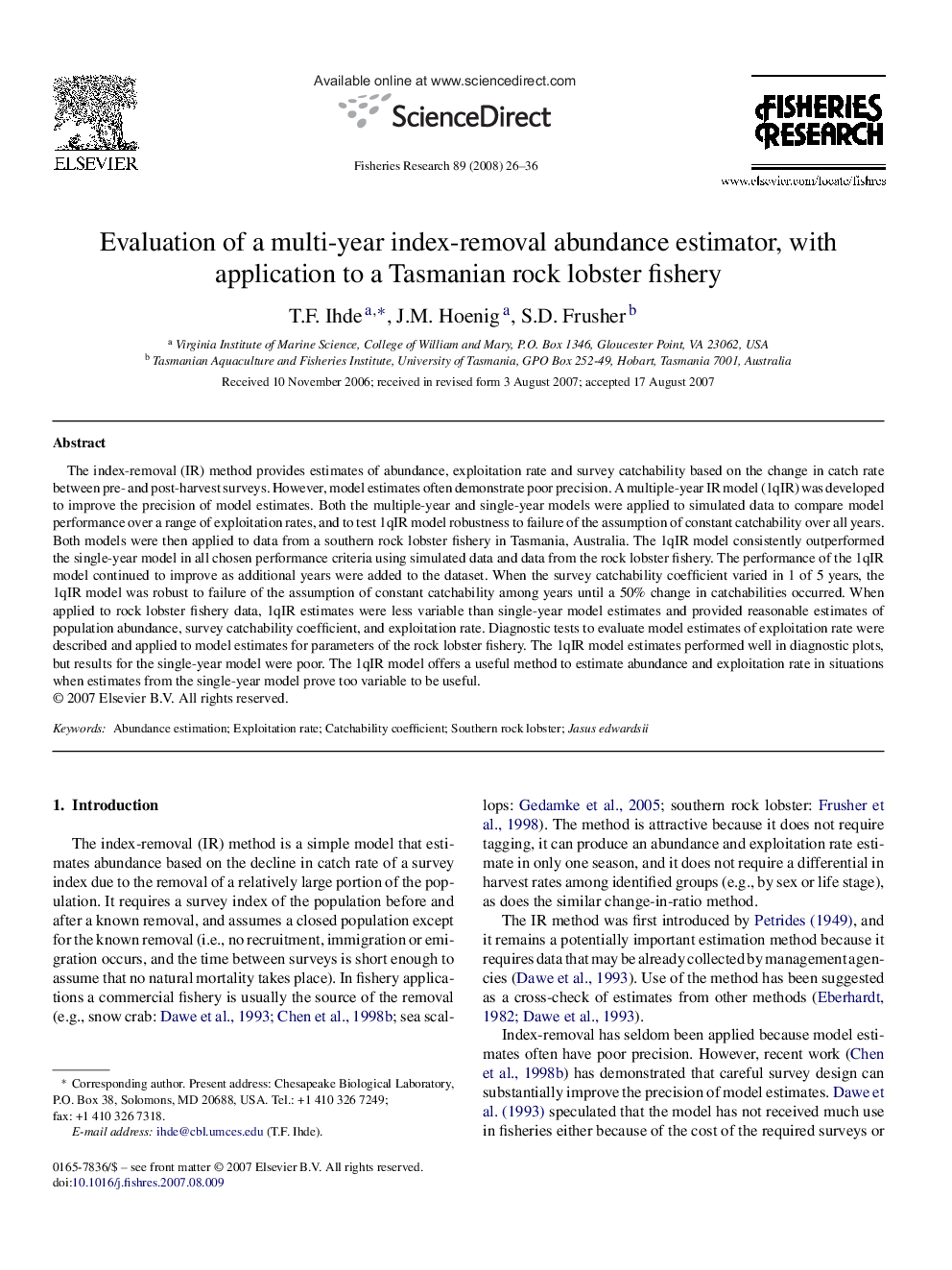| Article ID | Journal | Published Year | Pages | File Type |
|---|---|---|---|---|
| 4544560 | Fisheries Research | 2008 | 11 Pages |
The index-removal (IR) method provides estimates of abundance, exploitation rate and survey catchability based on the change in catch rate between pre- and post-harvest surveys. However, model estimates often demonstrate poor precision. A multiple-year IR model (1qIR) was developed to improve the precision of model estimates. Both the multiple-year and single-year models were applied to simulated data to compare model performance over a range of exploitation rates, and to test 1qIR model robustness to failure of the assumption of constant catchability over all years. Both models were then applied to data from a southern rock lobster fishery in Tasmania, Australia. The 1qIR model consistently outperformed the single-year model in all chosen performance criteria using simulated data and data from the rock lobster fishery. The performance of the 1qIR model continued to improve as additional years were added to the dataset. When the survey catchability coefficient varied in 1 of 5 years, the 1qIR model was robust to failure of the assumption of constant catchability among years until a 50% change in catchabilities occurred. When applied to rock lobster fishery data, 1qIR estimates were less variable than single-year model estimates and provided reasonable estimates of population abundance, survey catchability coefficient, and exploitation rate. Diagnostic tests to evaluate model estimates of exploitation rate were described and applied to model estimates for parameters of the rock lobster fishery. The 1qIR model estimates performed well in diagnostic plots, but results for the single-year model were poor. The 1qIR model offers a useful method to estimate abundance and exploitation rate in situations when estimates from the single-year model prove too variable to be useful.
